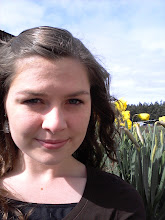So many people have asked me questions about the wall. I thought it might be useful to post these questions. Perhaps they would answer some questions YOU may have. Feel free to leave any comments or questions you have that were not answered.
Q: What is the wall built of?
A: The structure of the wall is built of three things: posts to support the wall, wire (hogwire and chicken wire), and Typar. The posts were cemented several feet into the ground to support the large structure. On each side of the posts, a foot apart, the sides of the wall were erected. After the sides were thoroughly wired to the posts and to each other, the wall was filled dirt.
Q: How do you plant in the wall?
A: It is very simple to plant in the wall. You need three basic tools: a razor knife, a shovel, and wire cutters. I would recommend wearing gardening gloves because the wires can be rough on the hands. Simply cut the wires and bend them back making ample room for whatever you are planting. Then slit the Typar the appropriate size. Shovel out the dirt and gently place your plant inside. Within a few days your plant will begin to grow skyward. It is very exciting to see watch it grow up!
Q: How long did it take to plant the wall?
A: There are two walls at the farm, each is planted on both sides. It took me approximately 8 hours to plant each side. Keep in mind there were probably hundreds of plants for each side. Because there are more steps than normal gardening it does take longer. But it is well worth the effort when you see your final result!
Q: Is it possible to make a smaller version of your Vertical Garden?
A: Yes! It is very feasible to make a small Vertical Garden for those who don't have enough space or time. You could even build a small cube with the primary goal of growing salad greens. The possibilities are endless!
Q: What kind of things grow well on the Vertical Garden?
A: I found SO many things that grow well, particularly salad greens. Any sort of mustard, lettuce, kale, pac choi, etc. does exceedingly well. I have grown many herbs (Thyme, Marjoram, Oregano, Parsley) and flowers. Petunias are perhaps the best flowers to plant in the wall. They do a great job of covering and flowing. Any climbing vines or flowers are fabulous! I haven't experimented AS much with vegetables, but tomatoes have done great, as well as Chard.
Q: How do you fertilize?
A: I have found it easiest to use liquid fertilizer (MiracleGro) and to pour small amounts into each hole using a watering can.
Q: How do you water?
A: We have placed a soaker hose at the top of the wall. Actually, I have found that the wall very rarely dries out. Because it is shaded it stays very wet. The top foot or so dries out but the soaker hose does a good job at watering that. As I plant I water them in to keep them from going into too much shock.
I think that covers the questions I am asked most often. Like I said, please ask any questions you may have. This IS experimental so I cannot garantee that I can answer everything. :-) We are also at the end of the season so there won't be a lot to post about between now and spring. But I am eagerly anticipating the planning for next year's Vertical Garden!
I was able to harvest some salad greens from the wall this past week. What fun!






 Me
Me





















 (The Cool Side)
(The Cool Side)
 The Lavender Display Garden
The Lavender Display Garden The Miniature Garden
The Miniature Garden


 The Herb Garden
The Herb Garden My newly finished wall
My newly finished wall Looking back from the Wall.
Looking back from the Wall.







 Our first plant!!
Our first plant!! The beginning of the first wall.
The beginning of the first wall.